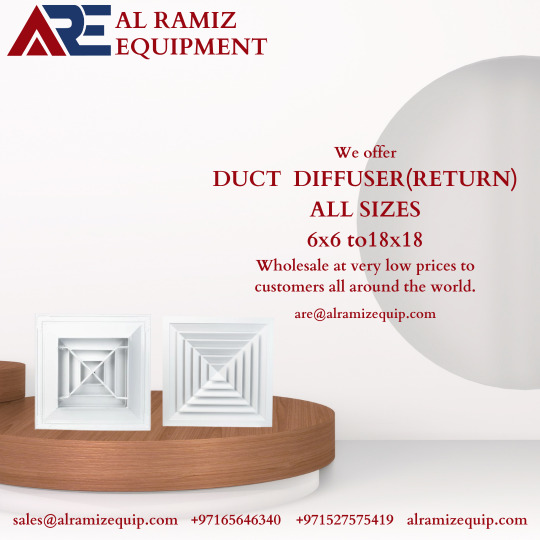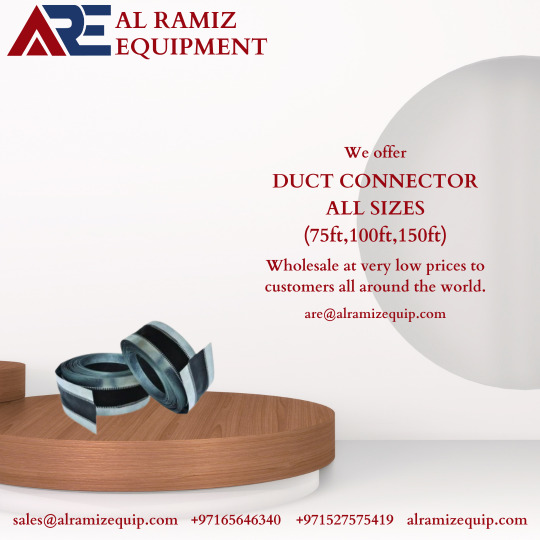#BuildingHVAC
Explore tagged Tumblr posts
Text
DUCT DIFFUSER (RETURN)
ALL SIZES
6x6 to 18x18
Air Return: It also facilitates the return of air from the room back to the HVAC system for reconditioning.
Design:
Grille Structure: Typically, a duct diffuser return consists of a grille or a register that covers the opening in the ductwork through which air enters or exits.
Diffuser Plate: Inside the grille, there may be a diffuser plate that helps to distribute air evenly across the room.
Filter Compatibility: Some designs include a provision for air filters, which can help improve indoor air quality by trapping dust, allergens, and other particles.
Types:
Ceiling Diffusers: Mounted on ceilings, these diffusers blend into the room's design while efficiently distributing air.
Wall Diffusers: Installed on walls, these diffusers direct airflow across the room horizontally or vertically.
Floor Diffusers: Placed in the floor, these diffusers can be stepped on and are designed to distribute air close to ground level.
Materials:
Metallic: Often made of aluminum or steel for durability and ease of cleaning.
Plastic: Lightweight and sometimes used for aesthetic reasons or where corrosion resistance is a concern.
Wood: Less common but used in specific architectural designs to match interior finishes.
Adjustability:
Damper Controls: Many diffusers have dampers that can be adjusted to control the airflow rate, direction, or shut off the airflow entirely when needed.
Directional Vanes: Some diffusers feature adjustable vanes or louvers that allow for precise control over the direction of airflow.

#alramiz#hvac#machines#wholesale#rewinding materials#thermostat#tools & safety#heater & element#are#acsparta#al#ramiz#DuctDiffuser#ReturnAir#HVAC#AirReturn#Ventilation#Ductwork#AirFlow#HVACSystems#AirDistribution#DuctDesign#HVACTechnology#IndoorAirQuality#HVACInstallation#AirDiffuser#BuildingHVAC
2 notes
·
View notes
Text
DUCT CONNECTOR
ALL SIZES
(75ft ,100ft , 150ft)
Material: Often constructed from galvanized steel or aluminum, ensuring durability and resistance to corrosion.
Flexibility: Designed to allow for flexibility and movement, accommodating thermal expansion and contraction within the HVAC system.
Sealing: Includes integrated sealing mechanisms such as gaskets or flanges to ensure airtight connections, preventing leakage of air and energy loss.
Ease of Installation: Engineered for straightforward installation, often featuring quick-connect mechanisms or screws for securing to the ductwork.
Variety: Available in various types such as straight connectors, flex connectors (which provide additional flexibility), and T-connectors (allowing branching of ducts).
Application: Used in both residential and commercial HVAC systems to join duct sections, ensuring efficient airflow and maintaining indoor air quality.

#alramiz#hvac#machines#wholesale#rewinding materials#thermostat#heater & element#are#tools & safety#acsparta#al#ramiz#DuctConnector#HVAC#Ventilation#Ductwork#AirFlow#HVACSystems#DuctInstallation#HVACTechnology#AirDistribution#DuctFittings#BuildingHVAC#ClimateControl#HVACEngineering#DuctConnection#HVACEquipment
1 note
·
View note